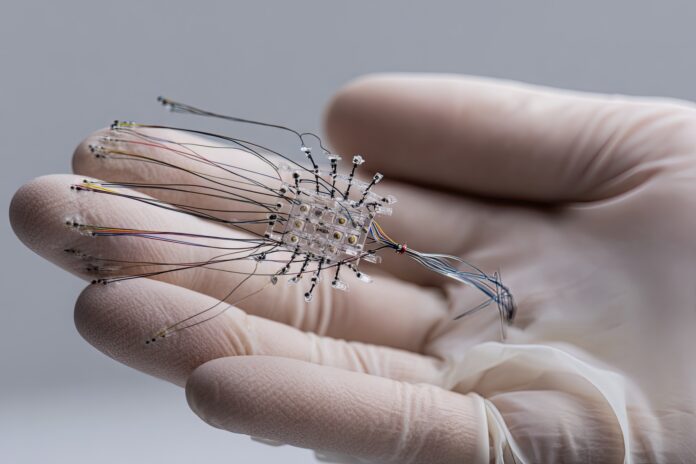The Next Chapter in Brain-Computer Interfaces: Precision Neuroscience’s Breakthrough
Brain implant technology is rapidly transforming what once seemed like science fiction into today’s medical reality. In 2025, Precision Neuroscience boldly entered the spotlight by successfully implanting a brain-computer interface (BCI) in a human participant. Most importantly, this milestone is a watershed moment, advancing a field previously dominated by Neuralink and opening new possibilities for neural restoration and understanding the mind itself.
Who Is Precision Neuroscience—and Why Does It Matter?
Founded by Dr. Benjamin Rapoport—a neural engineer with a hand in building Neuralink—Precision Neuroscience brings a fresh vision to brain implant technology. Their mission is to make BCIs safer and more accessible, especially for patients with serious neurological conditions like paralysis or stroke. Because their device sits delicately atop the brain’s surface, it promises less invasiveness, fewer complications, and reduced recovery times when compared to competitors.
How Their Brain Implant Works
Precision Neuroscience’s Layer 7 Cortical Interface is a marvel of engineering. This ultra-thin, flexible array contains 1,024 microelectrodes—only as thick as a human hair—that gently rest on the cortex. While other implants thread deep into brain tissue, Precision’s solution listens just above it. Therefore, the risk of inflammation and tissue damage is dramatically minimized. Yet, the device captures high-fidelity electrical signals, translating neural activity into digital commands. In early human trials—enabled during unrelated brain surgeries—the device captured signals so precisely that it could soon enable communication and movement restoration for those suffering from paralysis.
What Sets Precision Apart from Neuralink?
Neuralink made global headlines with its robotic, deeply inserted threads designed for ultra-high bandwidth. But this approach involves opening the skull and threading filaments into the brain’s gray matter, which may increase risk over time. Precision opts for a less invasive procedure that leaves the delicate tissue largely intact. Besides that, its array can be implanted in about 15 minutes—dramatically enhancing clinical feasibility. According to recent reports, the company prioritizes rapid patient recovery, scalability, and long-term safety as it moves toward broader regulatory approval.
Clinical Implications: Why This Advancement Matters
For people living with paralysis, stroke, or neurodegenerative conditions, brain implant technology could restore lost abilities. Therefore, BCI devices may allow users to control computers, wheelchairs, or robotic limbs—simply by thinking. Precision’s less intrusive approach means these benefits could soon reach a much wider population. Moreover, this technology might help decode complex neurological diseases, enabling real-time brain activity mapping and tailored interventions for conditions like epilepsy, depression, or traumatic brain injuries.
The Path Forward: Merging Science and Society
Precision Neuroscience’s breakthrough is not just technical—it’s social. As BCIs inch closer to consumer and clinical settings, ethical concerns about privacy, data security, and consent rise to the surface. Because these devices handle deeply personal information, robust measures must ensure protection from misuse or unauthorized access. In addition, ongoing clinical trials will provide greater insight into long-term safety and performance. Meanwhile, collaboration between industry leaders, regulatory bodies, and medical communities will be essential for widespread adoption and trust.
What’s Next for Brain Implant Technology?
While the future is promising, many hurdles remain. Regulatory agencies like the FDA continue rigorous evaluation before BCIs can achieve mass-market medical application. Both Neuralink and Precision Neuroscience must also prove the resilience, biocompatibility, and upgradability of their devices in long-term use. Besides that, new players are rapidly joining the field, such as Synchron’s Stentrode, which offers a minimally invasive, vascular BCI. This competition drives rapid innovation, making the future of brain implant technology brighter—but also more complex—than ever before.
Empowering the Next Generation
Looking ahead, the applications for this technology extend well beyond restoring lost senses or movement. Research suggests BCIs might eventually support cognitive enhancement, memory retrieval, or even new forms of digital communication. Because Precision Neuroscience’s design lowers hurdles to access and recovery, we may soon see clinical tools that were once unimaginable available to millions worldwide.
Final Thoughts: The Rise of a New Era
The successful test by a Neuralink rival demonstrates that innovation in brain implant technology is accelerating. This achievement pushes us closer to a world where human limitations are diminished through direct brain-computer interaction. As researchers, clinicians, and ethicists navigate this uncharted territory, staying informed is more crucial than ever. The brain, once considered unreachable, is now becoming an open frontier for healing, augmenting, and understanding humanity itself.
Further Reading
- Nature: Brain-Computer Interfaces Enter the Clinic
- CNBC: Precision Neuroscience Tests Implant in Human Brain
- Scientific American: The Expanding World of Brain Implants
- IEEE: The Future of Brain-Computer Interfaces



